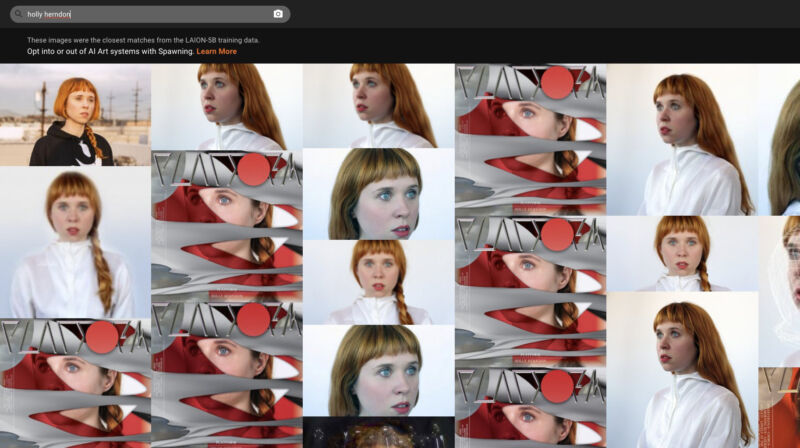Have AI image generators blended your art? A new tool lets you check – Ars Technica


In response to the controversy over image synthesis models that learn from images of artists copied from the Internet and can replicate their artistic styles, a group of artists has released It allows anyone to see if their artwork has been used to train AI.
The website “”He knocks in Stable Diffusion and training data used to train Google AI models, among others. To build LAION-5B, bots guided by a team of AI researchers visited billions of websites, including large ones. Artwork via DeviantArt, ArtStation, Pinterest, Getty Images and more. Along the way, LAION collected millions of images without consultation from artists and copyright holders, which upset some artists.
Have I received training? A website managed by a group of artists , users can search the compilation data by text (eg artist name) or uploaded image. You’ll see image results with caption data associated with each image. Same as the previous one Created by Romain Beaumont and recently by Andy Baio and Simon Willison, but with a sliding interface and the ability to do reverse image searches.
Any matches in the results, the image can be used to train AI image generators and still be used to train tomorrow’s image fusion models. AI artists can use the results to guide more precise questions.
The spawning website is part of the team’s goal for future AI training efforts around getting artists’ permission to use their images. Its purpose is to allow artists to enter or exit AI training.
A cornucopia of data
As mentioned above, image fusion models (ISMs) such as stable diffusion learn to generate images by analyzing millions of images scraped from the Internet. These images are useful for training purposes because they have tags (often called metadata) such as captions and . The relationship between this metadata and the images allows ISMs to learn the relationship between words (such as the artist’s name) and image patterns.
When you type in a query like “painting of a cat by Leonardo da Vinci,” ISM lists the pictures of cats and da Vinci paintings it knows about for each word in that phrase, and how the pixels in those pictures are arranged. in relation to each other. It then produces an output that combines that knowledge into a new image. If a model is properly trained, it will never return the image used to train it, but some images may be similar in style or composition to the source material.
Paying people to annotate billions of images for an image dataset is impractical. in small amounts), so all the “free” image data on the Internet is an attractive target for AI researchers. They don’t need a license because the procedure seems legitimate for a reason Scraping internet data. But a recurring theme in AI news stories is that deep learning can find new ways to use previously unsuspected public data — and even if the method is technically legal, it can do so in ways that violate privacy, social norms, or community ethics. .
It’s worth noting that people who use AI image generators often refer to artists (usually more than one at a time). It’s not looking to innovate and commit copyright infringement or impersonate artists. Even so, some groups like Spawning feel that consent should always be part of the equation—especially as we enter this uncharted, fast-growing territory.
We offer you some site tools and assistance to get the best result in daily life by taking advantage of simple experiences
